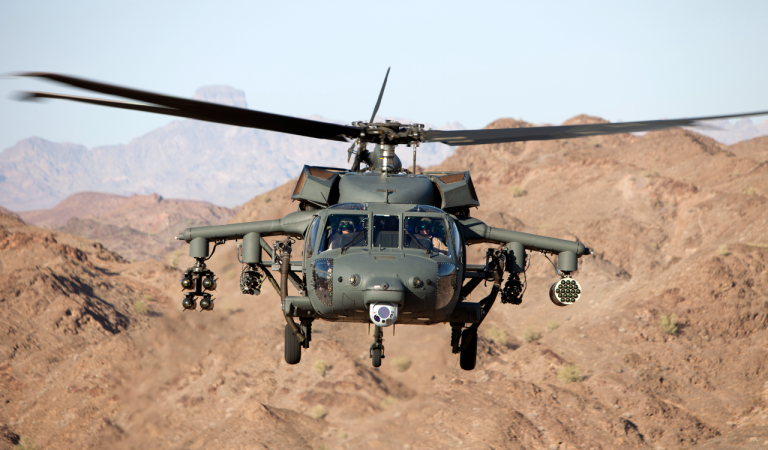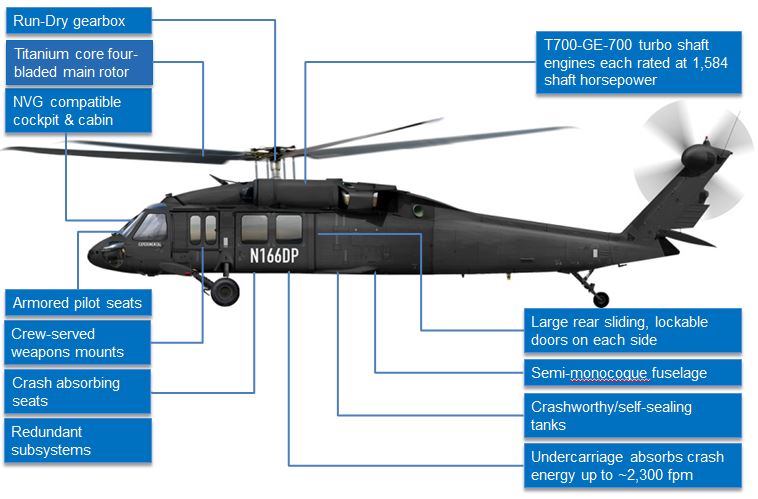Just how the UH 60's Adaptability Supports Both Battle and Altruist Efforts
Just how the UH 60's Adaptability Supports Both Battle and Altruist Efforts
Blog Article
UH-60: Technologies in Modern Helicopter Layout
The UH-60 helicopter stands as a criteria in modern air travel, showcasing considerable innovations in layout and technology that cater to the evolving demands of military procedures. As we explore the evolution and crucial technologies of the UH-60, it ends up being vital to think about just how these advancements influence not just existing applications however additionally the future landscape of helicopter style.

Development of the UH-60
The evolution of the UH-60 Black Hawk helicopter stands for a significant turning point in aerospace engineering and army aviation. Introduced in the late 1970s, the UH-60 was designed by Sikorsky Airplane to fulfill the United States Military's need for a flexible utility helicopter capable of carrying out a range of objectives. Its style emphasized rate, durability, and maneuverability, establishing new standards for operational efficiency.
The UH-60 features a distinctive four-blade blades system, which enhances lift and stability, allowing it to operate properly in diverse settings. Its airframe is created from sophisticated composite materials, adding to a decrease in weight while maintaining architectural honesty. The helicopter's design likewise incorporates enhanced aerodynamics, which boosts fuel performance and increases array.
Throughout the years, the Black Hawk has actually undergone several upgrades to improve its capacities, consisting of enhanced engines, advanced trip control systems, and modular systems for easy upkeep and flexibility. The helicopter's capacity to do objectives varying from troop transportation to medical discharge has actually solidified its function as a backbone of united state armed forces operations. The UH-60 Black Hawk remains a prime example of how technology in helicopter design can substantially impact armed forces efficiency and operational adaptability.
Advanced Avionics Systems
Improvements in avionics systems have actually changed the abilities of modern helicopters like the UH-60 Black Hawk, boosting operational performance and situational awareness (UH 60). The combination of sophisticated avionics enables enhanced interaction, flight, and navigation monitoring, making the UH-60 much more versatile in diverse objective accounts
One of the vital attributes is the advanced digital cockpit, which uses multifunction display screens that supply real-time data, making sure pilots have prompt accessibility to critical flight info. This streamlining of details decreases pilot workload and enhances decision-making procedures during complex procedures. Additionally, the consolidation of GPS and inertial navigation systems allows accurate positioning and path preparation, improving mission execution in difficult atmospheres.
Moreover, progressed avionics systems enhance interaction capabilities through safe data links and voice communication systems, permitting smooth sychronisation with ground forces and various other airplane. The combination of automatic flight control systems better contributes to enhanced stability and control, especially in unfavorable weather or throughout low-altitude maneuvers.
Engine and Efficiency Enhancements
Engine efficiency in modern helicopters has actually taken a substantial leap onward, driven by technologies that increase effectiveness, reliability, and power. The UH-60 Black Hawk, for instance, utilizes the T700-GE-701C engine, which features a dual-channel, full-authority electronic engine control system.
Additionally, the integration of engine health tracking systems enables real-time diagnostics and anticipating maintenance, significantly improving operational reliability. These systems not only alert staffs to potential concerns prior to they become essential yet likewise assist in more reliable upkeep organizing, thereby reducing downtime.

Products and Structural Innovations
Current growths in materials and structural design have transformed contemporary helicopter building, boosting both efficiency and sturdiness. The introduction of sophisticated composite materials, such as carbon fiber reinforced polymers, has significantly minimized weight while keeping architectural honesty. This change not just enhances fuel effectiveness however likewise boosts haul capability, enabling helicopters like the UH-60 to execute even more diverse objectives.
Furthermore, developments in aluminum alloys and titanium components have contributed to boosted resistance to corrosion and exhaustion, extending the life-span of vital airframe elements. The tactical use of these products has actually caused a reduction in upkeep needs and improved general operational preparedness.

Additionally, the see this page assimilation of computer-aided layout (CAD) and additive manufacturing innovations has enabled extra complex geometries and light-weight frameworks, enhancing the aerodynamic efficiency of helicopter designs. These developments assist in quick prototyping and manufacturing, permitting suppliers to react swiftly to progressing mission needs.
Security and Survivability Functions
Safety and security and survivability features in contemporary helicopter layout have ended up being critical, mirroring the enhancing demands for goal effectiveness in difficult environments. The UH-60 Black Hawk, a notable instance, incorporates advanced technologies to boost team and guest defense. One of one of the most important developments is the unification of crashworthy fuel systems created to lessen the risk of fire during impact. In addition, the airframe is built with strengthened materials that dissipate and absorb power, additional securing passengers in the event of a crash.
The helicopter additionally employs a ballistic protection system, which consists of armored crew seats and important systems shielding, lowering susceptability to small arms fire and shrapnel. Enhanced situational awareness is attained through advanced avionics and sensing unit modern technologies, allowing pilots to find and stay clear of hazards effectively.
In addition, the assimilation of redundancy in essential systems-- such as twin engines and numerous flight control channels-- makes sure continued operation even if one system stops working. The UH-60 is geared up with sophisticated emergency flotation protection devices, boosting survivability in water touchdowns. Collectively, these attributes not just enhance the security of workers yet likewise boost mission success prices in hostile settings, showing the dedication to quality in helicopter design.
Conclusion
The UH-60 helicopter represents a considerable innovation in modern air go to website travel technology, incorporating innovative products, innovative avionics, and robust safety functions. Its advancement shows a dedication to improving performance and operational effectiveness while making certain pilot and crew survivability. The combination of light-weight compounds and advanced navigating systems emphasizes the helicopter's versatility in various armed forces missions. On the whole, the UH-60 acts as a benchmark for future growths in helicopter layout, symbolizing strength and flexibility in modern military operations.
The UH-60 helicopter stands as a benchmark in contemporary aviation, showcasing significant developments in design and technology that cater to the advancing demands of military procedures. As we discover the development and crucial technologies of the UH-60, it ends up being crucial to think about just how these growths influence not only existing applications but also the future landscape of helicopter layout.
Presented in the late 1970s, the UH-60 was created by Sikorsky Aircraft to meet the United States Military's requirement for a functional energy helicopter capable of doing a selection of missions. The UH-60 Black Hawk continues to be a prime example of exactly how advancement in helicopter design can significantly influence military performance and functional adaptability.
Overall, the UH-60 offers as a benchmark for future advancements in helicopter design, personifying strength and versatility in modern military procedures.
Report this page